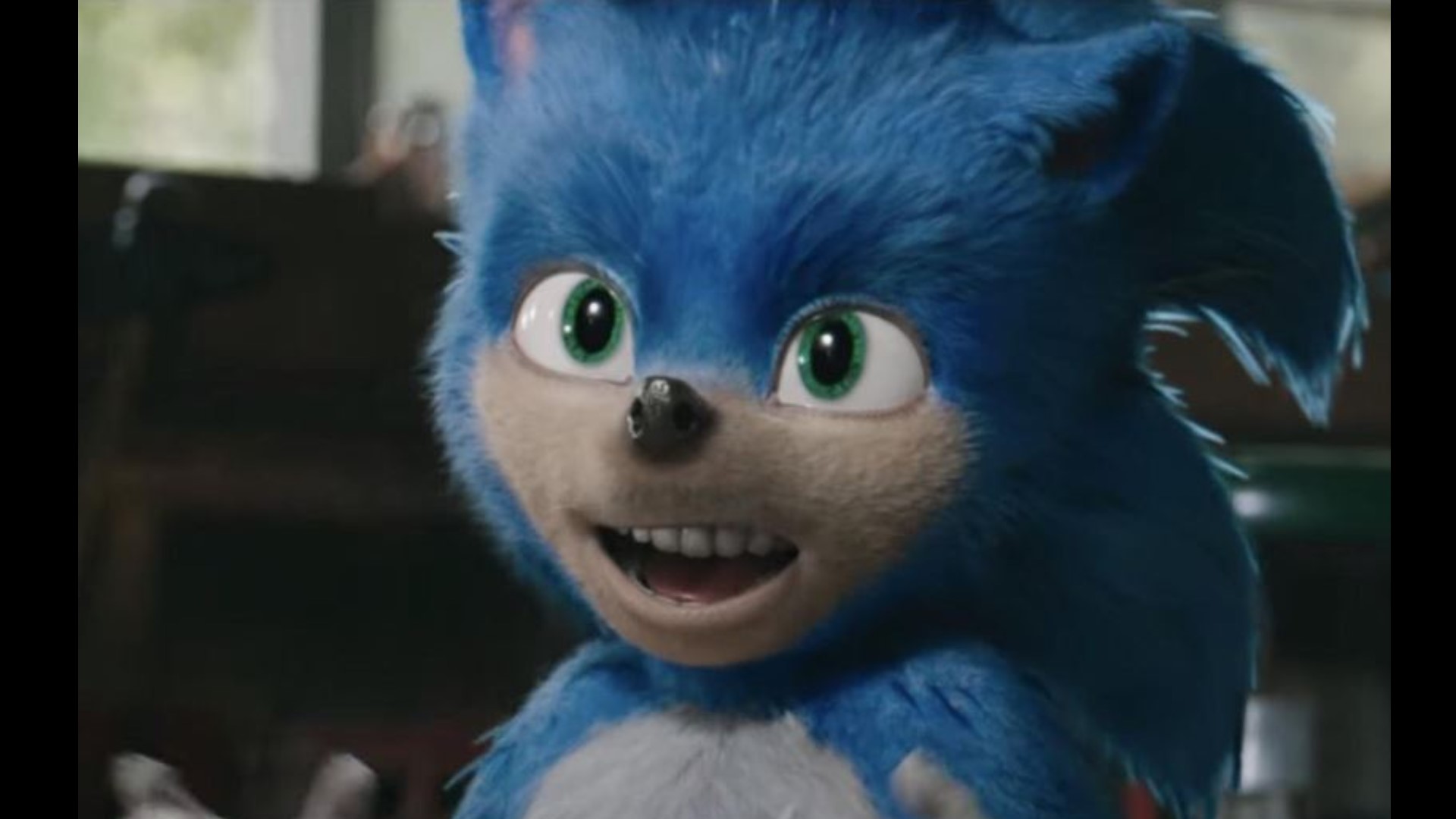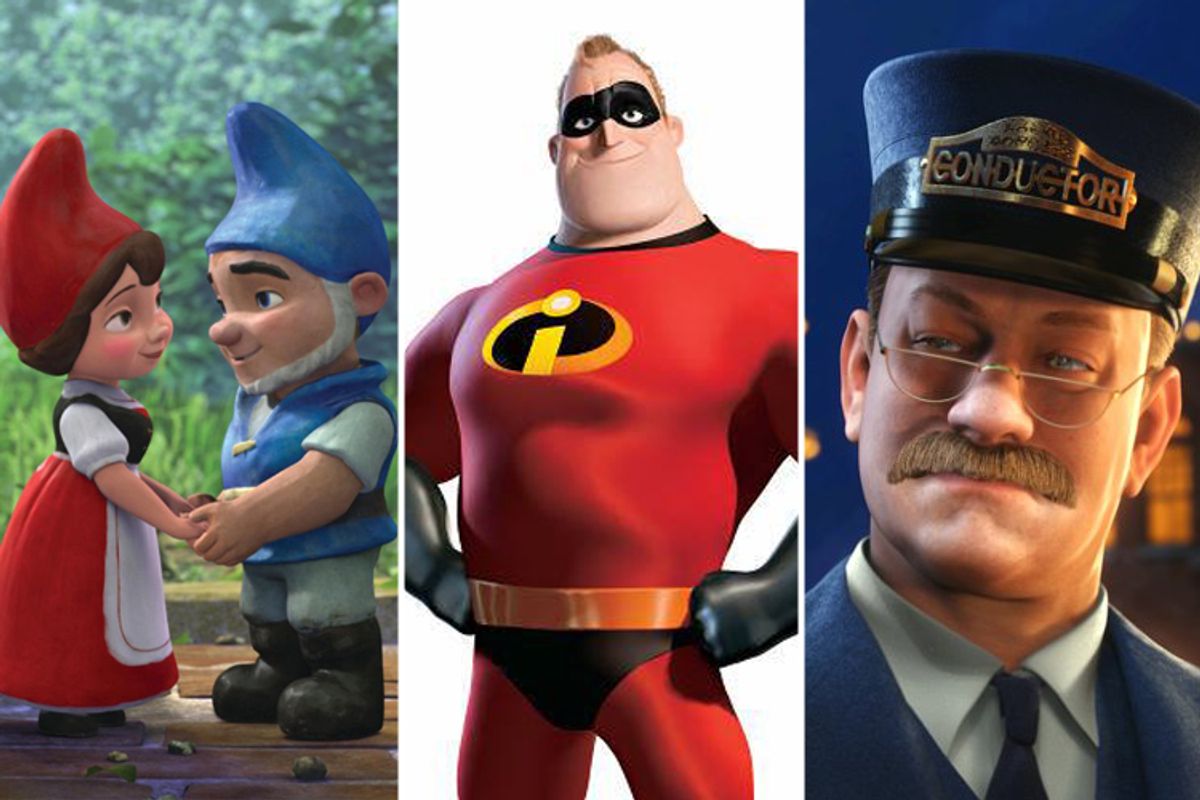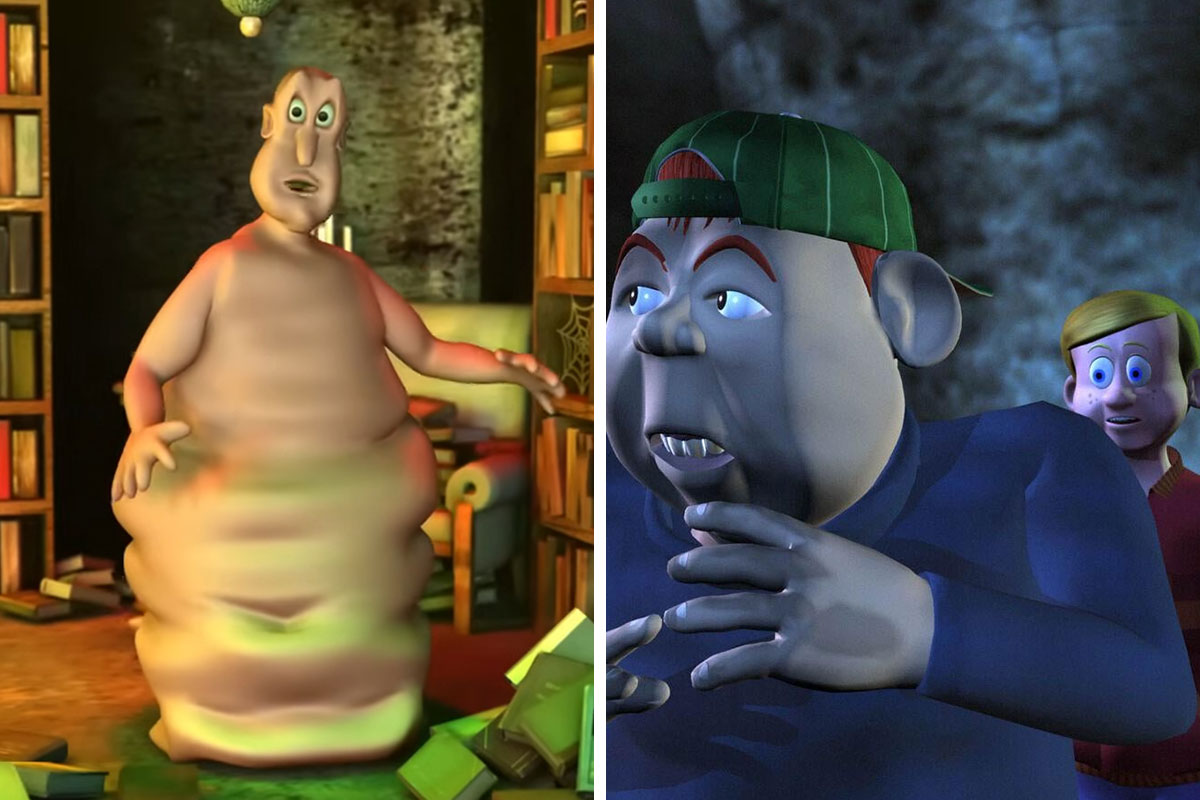Have you ever looked at a cartoon character and thought, 'Wow, that's a unique design,' or perhaps, 'That's a bit... different?' Well, you're certainly not alone in that feeling. The world of animation is full of all sorts of visual styles, and sometimes, a character's look can really stick with you, whether it's for being charming or, quite frankly, for being one of the ugliest cartoons you've ever laid eyes on. It's a fascinating topic, really, how our eyes perceive what's appealing and what just isn't.
It’s funny, isn't it, how something can be both striking and, in some respects, visually challenging at the same time? We often talk about beauty in art, but there’s a whole conversation to be had about designs that deliberately push boundaries, sometimes resulting in what many might call 'ugly.' This isn't always a bad thing, you know. Sometimes, a character designed to be a bit rough around the edges can be incredibly memorable, perhaps even iconic in its own way.
What exactly makes a cartoon fall into that 'ugliest cartoons' category? Is it the color palette, the shapes, the expressions, or something else entirely? We'll take a look at how different elements come together to create these distinct looks, and why sometimes, a character that isn't traditionally pretty can actually be a huge success. It's more complex than you might first think, that whole idea of what makes something visually unappealing.
Table of Contents
- Defining "Ugly" in Cartoon Design
- Why Designers Choose Unconventional Aesthetics
- Elements of Unappealing Design
- The Impact of Distinctive Looks
- Evolving Perceptions of Cartoon Beauty
- Frequently Asked Questions
Defining "Ugly" in Cartoon Design
When we talk about something being 'ugly,' what do we really mean, especially when it comes to cartoons? It's not always just about how a character looks on the surface. For instance, as a dictionary might explain, 'ugliest' can refer to physical appearance, like the phrase "Let's begin with the ugliest hippopotamus." That’s pretty straightforward, isn't it? You see it, and your brain processes it as not conventionally good-looking. But there's more to it, that's for sure.
Sometimes, the idea of 'ugly' connects with a character's personality or what they represent. Consider the idea of "this clan has the reputation of having the biggest, ugliest, meanest, and most ferocious Orks." Here, 'ugliest' isn't just about their faces; it’s tied into their whole nature, their very being. Their looks are part of their overall character, showing they are not friendly or gentle. So, a cartoon character might be drawn in a way that shows they are bad, or perhaps just not nice, and that visual choice makes them 'ugly' in a broader sense. It's almost like their inner self is showing on the outside, you know?
Then there's the idea of something being 'ugly' in a thematic or conceptual way. Think about how a play, like "The Merchant of Venice," can be described as "one of Shakespeare's most beautiful plays and, conversely, his ugliest." This isn't about how the actors look; it's about the difficult themes, the harsh realities, or the uncomfortable truths within the story. For cartoons, this could mean a design that makes you feel uneasy, or one that deals with heavy topics in a way that isn't visually comforting. So, 'ugliness' in cartoons isn't just about a character's face; it can be about the whole vibe, the message, or how it makes you feel, which is pretty interesting when you think about it.
Ultimately, what one person finds visually unappealing, another might find charmingly unique. It's all a bit subjective, isn't it? Our personal tastes, our cultural backgrounds, and even our moods can change how we see things. So, when we label a cartoon as one of the 'ugliest cartoons,' we're often sharing a personal viewpoint, and that's perfectly fine. There's no single rule for what makes something 'ugly' in art, and that's kind of the beauty of it all.
Why Designers Choose Unconventional Aesthetics
You might wonder why a cartoon creator would choose to make a character look, well, not so pretty. It seems a bit counter-intuitive, doesn't it? But there are actually many good reasons for this design choice. For one thing, humor often relies on exaggeration. A character with wildly disproportionate features or a truly bizarre face can be incredibly funny, just because they look so out of the ordinary. Think about how many classic funny characters aren't exactly supermodels; their odd looks are part of their charm, and that's actually a common thing in comedy.
Another reason is characterization. A character's appearance can tell you a lot about them before they even say a word. If a character is meant to be a villain, giving them sharp, angular, or unsettling features can immediately signal their bad intentions. Likewise, a character who is a bit downtrodden or clumsy might have a design that reflects that, making them look a little less polished. It’s a visual shorthand, basically, that helps you understand who this person is in the story. So, the design isn't just for show; it serves a purpose, you know?
Then there's the desire to stand out. In a world full of cartoons, having a truly distinctive art style or character design can make a show memorable. If every character looked conventionally attractive, things might get a bit boring, wouldn't they? An unconventional design, even one that some might call 'ugly,' can make a cartoon instantly recognizable. It gives the show its own identity, its own flavor, and that's something really valuable in the crowded world of animation. It’s a way to make a mark, basically.
Sometimes, the goal is to evoke a specific feeling in the audience. A design that is a bit grotesque or unsettling might be used in a show that aims to be spooky, or perhaps to make viewers feel a sense of discomfort or even sympathy. It's about creating an emotional connection, even if that emotion isn't pure delight. And, in a way, it shows the range of what animation can do, that it's not just about making things look nice. This kind of design can be very powerful, actually, in telling a story or setting a mood.
Finally, there's artistic expression. Some creators simply have a unique vision, and they want to push the boundaries of what animation can look like. They might be experimenting with different art styles, or they might just have a personal aesthetic that leans towards the abstract or the unconventional. It's about creating art that challenges perceptions, and sometimes, that means creating characters that aren't traditionally pretty. It’s their artistic voice coming through, and that's something to appreciate, too, isn't it?
Elements of Unappealing Design
So, what are the actual ingredients that go into making a cartoon character that some might call 'ugly'? It often comes down to a mix of different visual choices. One big factor is proportions. If a character has a tiny head on a giant body, or perhaps arms that are way too long, it can look strange, right? These exaggerated or distorted proportions can create a sense of unease or just make the character look odd. It's not what we're used to seeing in real life, so it stands out, sometimes in a way that feels a bit off.
Color choices play a big part, too. While bright, cheerful colors often make things feel happy, some designs use muddy, sickly, or clashing color palettes. Imagine a character with skin that's a strange shade of green, or clothes that just don't seem to go together. These color choices can make a character seem unhealthy, or perhaps just unpleasant to look at. It's like the colors themselves are telling you something about the character, or the world they live in, and that can be a bit unsettling, you know?
The way lines are drawn also matters a great deal. If the line work is jagged, inconsistent, or just looks a bit messy, it can contribute to a character looking unpolished or even frightening. Smooth, clean lines often make things feel neat and friendly, but a rougher, more chaotic line style can make a character seem wild, or perhaps even a little bit dangerous. It’s a subtle thing, but the lines really do guide your eye and tell you a lot about the character's form and feel.
Facial features are, of course, a huge part of how we perceive a character. Unusual eyes, mouths that are too big or too small, or noses that are oddly shaped can all contribute to a character being perceived as one of the ugliest cartoons. These features might be exaggerated for comedic effect, or they might be designed to make a character look genuinely unsettling. Think about characters with eyes that don't quite look right, or a mouth that's always in a strange grimace; these things can really change how you feel about them, honestly.
Finally, the overall style of the animation can make a difference. Some cartoons deliberately go for a crude or unsettling look, using animation that isn't smooth or realistic. This can be a conscious artistic choice to create a specific mood or to stand apart from more conventional animation. It’s like the whole visual package is designed to challenge your expectations, and that can be a bit jarring for some viewers, but also very memorable for others. It’s really about the whole picture, isn’t it?
The Impact of Distinctive Looks
When a cartoon character has a design that stands out, whether it's because it's charming or because some might call it 'ugly,' it definitely has an impact. For some viewers, a character with an unconventional or visually challenging design can be a bit off-putting. They might not connect with the show because they find the characters hard to look at, and that's a pretty natural reaction for some people. It’s like some art just isn’t for everyone, and that’s perfectly okay, too.
However, for others, these very same designs can create incredibly strong emotional connections. A character that looks a bit strange might evoke sympathy, or perhaps even a sense of understanding. Viewers might appreciate the artistic bravery of the creators, or they might just find something endearing in a character that isn't traditionally perfect. It’s a bit like finding beauty in unexpected places, you know? These characters can become fan favorites precisely because they are so different, and that’s a powerful thing.
Unconventional designs, especially those that push the boundaries of what's considered 'normal,' can also lead to cult followings. Shows with unique or even 'ugly' aesthetics often attract a dedicated audience who appreciate the distinctiveness and the artistic vision behind them. These fans often love to discuss why they find these characters appealing, even if others don't immediately see it. It creates a community around the show, and that's pretty cool, if you ask me.
Moreover, these kinds of designs often spark a lot of discussion and debate. People love to talk about what they find appealing or unappealing in art, and cartoon character design is no exception. Online forums, social media, and even just conversations among friends often feature lively debates about which cartoons are the 'ugliest cartoons' or which have the most interesting designs. This kind of conversation keeps the show relevant and helps it stay in people's minds, which is a good thing for any piece of art, really.
So, while a design might initially be seen as 'ugly' by some, its impact can be far-reaching. It can challenge our ideas of beauty, encourage new forms of artistic expression, and foster a deeper appreciation for the diverse world of animation. It shows that there's more to a character than just being pretty; sometimes, being different is what makes them truly special, and that's a valuable lesson, too, isn't it?
Evolving Perceptions of Cartoon Beauty
The way we see beauty, and indeed 'ugliness,' in cartoons isn't fixed; it changes over time. What was once considered a strange or even off-putting design in one era might become widely accepted or even celebrated in another. Styles in animation, just like in fashion or music, are constantly shifting. Think about older cartoons that might have seemed a bit rough around the edges when they first came out, but now we see them as charming classics. It’s almost like our eyes get used to new ways of seeing things, you know?
Current trends in animation also play a big part in what we consider visually appealing or unappealing. There's a growing appreciation for diverse art styles, and creators are often encouraged to experiment with unique aesthetics. This means that designs that might have been considered too 'weird' in the past are now finding a wider audience. It’s a pretty exciting time for animation, actually, with so many different visual approaches getting a chance to shine. This openness means more unique designs, which is great for variety.
The rise of independent animation and online platforms has also given a voice to artists with very distinct visions. These creators aren't always bound by the same commercial pressures as big studios, so they have more freedom to create characters that truly reflect their artistic sensibilities, even if those sensibilities lean towards the unconventional. This has led to a lot of cartoons with truly original designs, some of which might be considered 'ugly' by traditional standards, but are loved for their originality. It shows that there’s a place for all kinds of art, which is really something.
Furthermore, discussions around character design are more active than ever. With social media, people can instantly share their opinions, debate different art styles, and even influence how future designs are perceived. This constant conversation helps to shape our collective understanding of what makes a cartoon character work, both visually and emotionally. It's a dynamic process, and it means that the idea of what constitutes the 'ugliest cartoons' is always being revisited and re-evaluated, which is pretty cool, isn't it?
So, as time goes on, our ideas about what makes a cartoon character beautiful or, conversely, 'ugly,' will continue to evolve. It's a reminder that art is a living thing, always changing and always inviting new interpretations. The characters that some might call the 'ugliest cartoons' today could very well be the beloved icons of tomorrow, simply because they dared to be different. It’s a testament to the power of unique design, really, and how it can capture our attention in unexpected ways.
Frequently Asked Questions
What makes a cartoon character ugly?
A cartoon character might be seen as 'ugly' due to a mix of design choices. This can include exaggerated or distorted body parts, unusual or clashing color schemes, rough or inconsistent line work, and facial features that are disproportionate or unsettling. Sometimes, a character's design is meant to reflect their negative personality traits or to create a specific, perhaps uncomfortable, mood for the viewer. It's often a combination of these elements that leads to that perception, you know?
Are ugly cartoons intentionally designed that way?
Quite often, yes, a cartoon character is intentionally designed to have an unconventional or even 'ugly' appearance. Designers might choose this approach for many reasons. It could be to make a character funny, to clearly show they are a villain, to make the show's style stand out, or to evoke a specific feeling like discomfort or sympathy. It's a deliberate artistic choice that serves a purpose within the story or the overall aesthetic of the show, basically.
Do people still watch cartoons with unappealing designs?
Absolutely! Many people enjoy cartoons with designs that might be considered 'unappealing' by some. These shows often gain a strong following because their unique art style helps them stand out, or because the unconventional designs contribute to the show's humor, storytelling, or overall message. What one person finds 'ugly,' another might find incredibly original, charming, or even iconic. It's really about personal taste and what you look for in a cartoon, and there's a huge audience for all sorts of styles, honestly.
We’ve explored what makes a cartoon character visually distinct, sometimes leading to them being labeled as one of the ugliest cartoons, and why creators might choose such bold artistic paths. From exaggerated features for humor to designs that reflect a character’s inner self, these unique looks truly shape our experience. It's all about how these visual choices create a lasting impression and spark conversations among fans, which is pretty cool. You can learn more about animation design principles on our site, and perhaps even discover new perspectives on the role of character art in storytelling. What do you think makes a cartoon truly unforgettable, whether it's for its beauty or its unique charm? Share your thoughts and let’s keep this conversation going!



Detail Author:
- Name : Prof. Green Thiel
- Username : kurt91
- Email : schiller.allan@yahoo.com
- Birthdate : 2006-08-17
- Address : 34265 Kayleigh Knolls Suite 146 West Bernadine, HI 33028
- Phone : +1-629-455-0867
- Company : Lehner PLC
- Job : Anesthesiologist
- Bio : Voluptas omnis eos est qui veritatis. Similique velit est eum sint voluptatum vero numquam voluptatum. Minus dolorum fugit iusto eos molestiae exercitationem delectus.
Socials
twitter:
- url : https://twitter.com/jakerussel
- username : jakerussel
- bio : Temporibus consequatur cum illum harum numquam aut. Magnam laborum provident id rerum minus et. Expedita consequatur ab laboriosam.
- followers : 3365
- following : 599
tiktok:
- url : https://tiktok.com/@jrussel
- username : jrussel
- bio : Quaerat ratione qui consequatur voluptate molestias totam.
- followers : 6098
- following : 2506
instagram:
- url : https://instagram.com/jake_xx
- username : jake_xx
- bio : Perspiciatis optio dolor a est sit et sit. Sed ducimus quidem possimus.
- followers : 426
- following : 1782